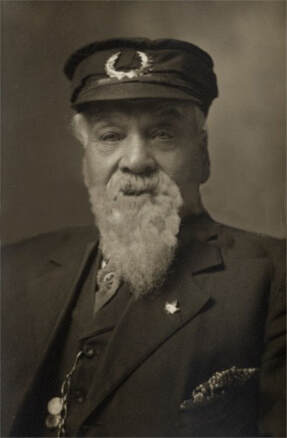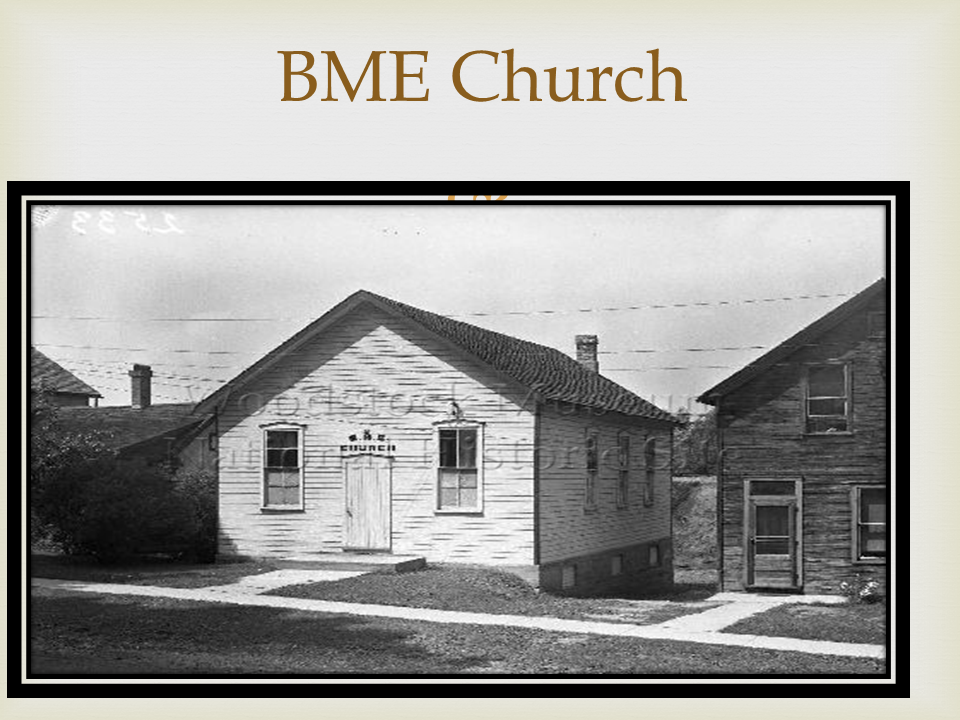Whatever the number however, not all Blacks who came to Canada were ex-slaves. Following the American Revolution many free Blacks settled here too. Some Blacks even fought in the War of 1812. Similarly, by the 1800’s, many Black people made their way to Oxford County trying to make a living in their communities. They worked in a wide variety of occupations like domestic workers, preachers, blacksmiths, framers, carpenters, bricklayers, plasters, roofers, framers and barbers just to name but a few.
Gilbert ‘Gil’ Sanders became known as the “only barber in town” who had a shop located on Dundas Street West in Woodstock. By the 1870 Census, Gilbert had two other Black men working for him as barbers, Henry Anderson and William Tillman. During the 1880s, Gilbert was married and had a family of three living in Woodstock.
Marsh had an assistant; a large Newfoundland dog named “Duke.” The two made an effective team but Duke was poisoned when he was 11 years old. Marsh’s second dog was a Great Dane named “Seeker”. While Marsh tried the doors of the local merchants, Seeker would stand and wait. If there were any sign of trouble, Marsh would let Seeker in to investigate. The beat back was in reverse; Seeker would lead the way down the allies behind the stores, followed by Marsh. If something usually was found, Seeker would “utter a deep growl and stand guard until Marsh” arrived with his gas lamp to investigate and make an arrest if necessary. If someone had to be placed in the lock-up, located in the cellar of the town hall, Marsh would lead the way, followed by the culprit and Seeker bringing up the rear. It was reported that Marsh and Seeker never lost a prisoner. In the morning, the prisoner would be freed.
After 40 years of public service, Marsh retired at age 81 in 1925 and was granted a pension for life by the Woodstock Police Commission. In 1932, Marshall Anderson died in hospital after succumbing to illness by his coal-gas oven. A poem written about Marshall Anderson that went:
You proud business man.
The “Seeker” and Marshall
Will secure all your land.
No crook will accost you.
No robbers appear
For in spite of brave Marshall,
It’s “Seeker” they fear.
J.C.D.
Peter worked as a blacksmith, he farmed, and he also worked in the lime kilns in Ingersoll. He would gather scarps of metal, rags and bones to recycle. After his wife died on April 9, 1911, Peter moved to Woodstock to find employment. He eventually moved to the House of Refuge where he died on January 17, 1929 at the age of 85.
Samuel Walter Smith was the eldest of six children born to Peter and Maude Smith on December 13, 1871. Of his five siblings, Samuel was the only one of the six who reminded in Oxford County. He was born in Innerkip then moved to Woodstock to find employment. Samuel married Mary A. Anderson from Chatham in 1903.
Samuel also founded a gravel company in Woodstock. He built his home at 256 Phelan Street in 1903 which would become known as the Homestead. According to the book A Safe Haven, Samuel supplied milk from his two cows to the Silverwood’s Dairy. Samuel and Mary had nine children: John, Fred, Walter, Madeline, Leta, and Hilda, Selena who died at a young age, Mabel and Mildred. Only 4 of the Smith children remained in Oxford County.
On January 15, 1937, Samuel died from carbon monoxide poisoning while fixing his vehicle in his garage. He was 67 years old and credited as a prominent man who helped to re-build the church in his community.
The grandson of Peter Smith, John Smith and his wife Shirley resided in the family Homestead on Phelan Street. John worked at Oxford Regional Centre. Like members of the Smith family, John and Shirley were also active members of their church. In October 1974, they dedicated a Memorial Light and Plaque to the Dundas Street United Church in Woodstock in memory of John’s parents.
Born on March 22, 1909 and raised in Woodstock, Frederick (known as Fred) Alfred Smith was well-known and respected person around town. Fred was known to ‘break into song’ wherever and whenever he went. He was known as the area’s finest gospel singer who sang for churches and gatherings and even travelled to the States to sing.
In 2000, Fred donated his family-owned century-old Stewart Good Cheer coal/wood burning stove to the Woodstock Museum which continues to be part of their collection. After the company left town, Fred then worked at the local freight company Overland Express Company as a janitor for 38 years.
Fred married Phyllis LaSalle and had 4 daughters: Gloria, Brenda, Shelia and Tammy. Of his 4 daughters, only one resides in Oxford County. Sheila Picknall is an Education Assistant in Woodstock and has two sons Nathan and Justin. Fred Smith died at Woodingford Lodge in Woodstock on October 2, 2007 in his 98th year.
The Smith family are one of the few remaining Black families who arrived in Oxford County via the Underground Railroad during the mid-1880s. The family has 150 years of history contributing to their community.
After being closed for six years, Reverend George Boyce took over the church in July 1977 and re-opened it a year later as Park Row Community Chapel. To show that the church was open for any race, it was painted black and white. Reverend Boyce baptized Kevin James Mitchell, of Stratford son of Ray and Cecilia Mitchell (Mabel Smith’s daughter) on February 6, 1978, during the church’s re-opening. The child was the fourth generation of the Smith family to be baptized in the church before it was closed permanently in 1986. A single-family dwelling now stands at the site that was once a centre for Blacks in Woodstock.
After Reverend LeBurtis died in 1910, Susan took over the business. By 1912, she renamed this business Le Burtis Medical Company and moved to 327 Dundas Street. Susan was so well known for curing ailments with her herbal remedies that many of her clients came from the United States. She only charged when there was a cure. Although charged by the Ontario Medical Association for practicing without a license, Susan’s case was dismissed. Susan LeBurtis continued to sell and practice herbal medicine until her death on April 8, 1926.


 RSS Feed
RSS Feed
